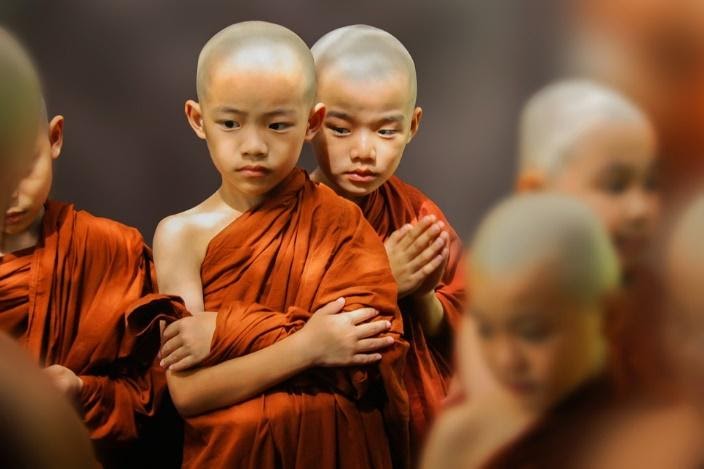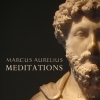
Buddhism was not originally created as a religion, rather it was developed as a philosophy. Today, in the west the general perception is that Buddhism is a religion. Matthieu Riccard is the one that reminds us that this doubt only fits in the western world, for in the east religiosity is defined in the way people act.
For the Eastern world there is no separation between religion and philosophy, and we can see this in Gandhi’s comments about Christianity. He said it was the most beautiful religion he ever learned about, but that unfortunately he had never met a true Christian.
Why would he say this, and why would we be discussing if Buddhism is a religion or a philosophy? Have you ever heard someone say I am a non-practicing Catholic, or I am a Jew, but I don’t have much time for the commitments of the community?
Well I have. And what they mean is that they identify themselves with that belief system but don’t act out those beliefs. For example, let’s say I’m the follower of a religion that says that I shall not harm anyone. I don’t hit people. But I liter. Is littering considered harmful?
Almost all cities flood in underdeveloped countries because their sewage system has been compromised by trash. These also happen to be some of the most religious places in the world.
Ok, but what does this have to do with Theravada? Theravada is a branch of Buddhism that deals with the philosophical understanding of the Buddha’s teachings.
The tradition
The Theravada tradition, meaning the doctrine of the elder, is based on the most ancient Buddha teachings that have been written down, the Pali Scriptures (Tipitaka). It is the more conservative line of Buddhism.
It has been the main tradition in Sri Lanka, the place that stores the original Tripitakas today. It’s also very strong in Myanmar and Thailand. It is estimated that there are over a hundred million followers of the Theravada tradition.
It is also known as the Buddhism of the south, or southern Buddhism, describing the Asian area where it has found a fertile territory to grow as a strong religion.
It’s believed to have been derived from the Hinayana tradition. Which is focused on the development of a strong sangha with its monks and nuns.
The monastic life is essential to this tradition. The monks eat from the generosity of the community. Their days start and end with meditation, which is called the Puja.
They only have a meal a day, which happens in complete silence. It’s prepared by volunteers, usually the ones that keep the monastery running since the monks live off financial aid. The Sangha or monastic community cannot live without the donations of the community, therefore the community can take part in some ceremonies. The monks listen to people’s hardship and help in solving conflict. They also encourage the community to follow the five precepts: no killing, no stealing, no sexual misconduct, don’t have ill will and don’t use intoxicants.
The monks live a life of silence and contemplation, but they also feel responsible for bringing knowledge to the community. They advise and lecture the people on the Buddha’s teachings. The monks also attend the needs of the vulnerable and outcasted, such as the incarcerated, disabled and elderly sharing their knowledge.
What about their beliefs?
As all Buddhist traditions, the Theravada follow the Buddha’s main teachings. These are the four noble truths, the eightfold path, the five precepts, and the three existential marwhichks.
The four noble truths are: the comprehension of the suffering, the acknowledgement of the origin of that suffering, the path to breaking free from the suffering and the complete freedom from suffering which correspond to awakening.
The third noble truth is achieved by the eightfold path, which is the development of virtue, mind and wisdom. After achieving these virtues through active participation, the participant will be able to reach enlightenment, breaking themselves free of samsara (the unending cycle of rebirth).
The Theravada tradition believes that there is no God, no Brahman. Thus no higher being is seen to have an effect on human life.
Enlightenment will happen with the arahants, the wise ones, the chosen ones. Buddha said that enlightenment was accessible to anyone willing to make the effort and commitment, which required them to practice the eightfold path till the end.
The Theravadas do not fully agree that anyone can become enlightened, they think that some are destined to while others are not.
In this tradition, even though there are some nuns, full ordination only happens to men. The school emphasizes that meditation and concentration are the main tools for awakening. This aspect leads to misunderstanding, because it makes the Theravada school sound like a selfish religion, when it’s not.
According to this school there won’t be any help from gods or external forces. Mankind is alone in the Universe. And the members of the Theravada can always count on a good friend, like a master or a Kalyanamitta. This master will help by showing the way.
Theravada encourages monastic life but also takes good care of lay followers, who should be able to become monks in future lives. The follower becomes a Buddhist from the moment he expresses the commitment of taking refuge in the three jewels: The Buddha, the Dharma and the Sangha.
Theravada and the modern world
Theravadas consider themselves closer to original teachings of the Buddha. They also believe that the teachings of the Buddha could be passed on to any community, or to anyone who’d show interest.
In the 20th century, the Theravada came into contact with the western world. In the most recent years the interest in Vipassana Meditation, a Theravada practice has skyrocketed. Nowadays it’s easy to find monasteries or communities where Buddhists and lay followers can go through retreats and learn more about this tradition.










